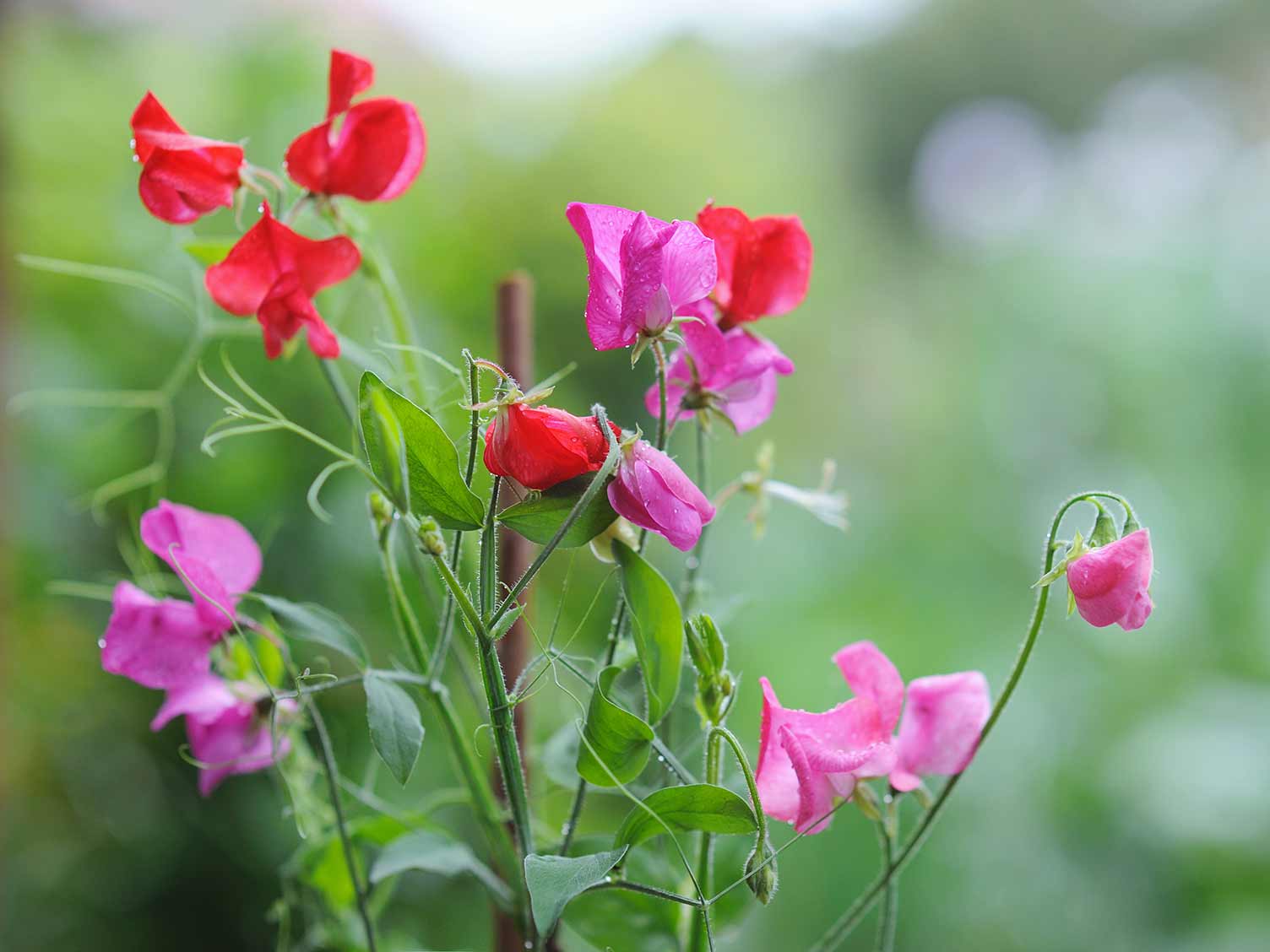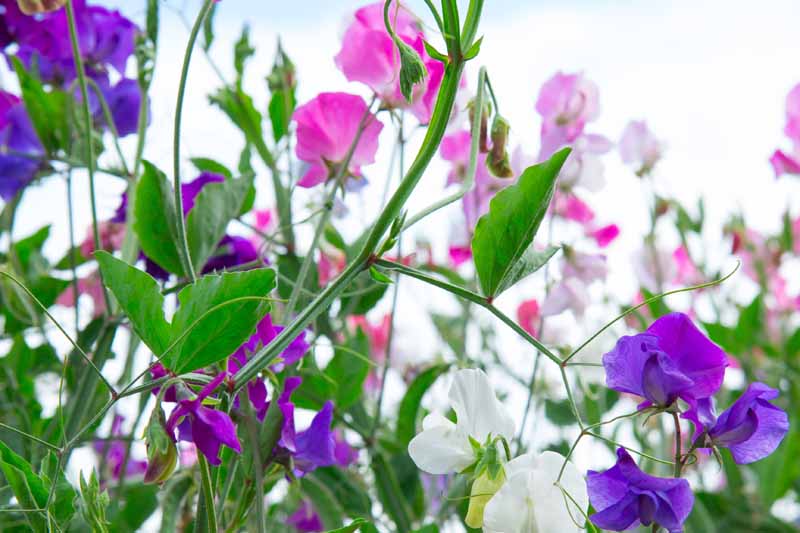
If you’ve walked around in early spring, you’ve probably smelled the intoxicating scent of the sweet pea flower. The combination of the bright blooms and the fragrant smell of this flower helps it live up to its name. But what’s the history behind this deliciously scented plant? Let’s dive in (nose first)!
Firstly, despite its tasty smell and edible-sounding name, the sweet pea plant is poisonous to humans. Very disappointing! There are many pea plants that are edible, but not the sweet pea flower, so don’t even try.
Sweet peas also have over 100 species and belong to the pea flower sub-family of the Fabaceae family. Some of the species include the Air Warden (with dark red petals), the America (raspberry-red with white streaks), Fire and Ice (deep pink and white markings with blue and purple lower petals), Miss Wilmott (blended orange, apricot and pink), and so many more. The only colour that isn’t available is yellow.
Henry Eckford was a Victorian era botanist who cultivated many of the sweet pea varieties that we know today. He created the Grandiflora group of sweet peas, which have bigger flowers and a greatly expanded range of colours. Even though his flowers are considered to be relatively small today, they still carry loads of elegance, as well as a wonderfully intoxicating scent.
Sweet peas are a romantic flower that symbolise kindheartedness, as well as blissful pleasure. Red blossoms are often associated with romance (as are many other red flowers), but also courage and strength. Purple symbolises royalty, blue represents relaxation and pink is playful.
In short, the next time you take a stroll and smell that beautiful sweet pea scent, remember the history and the variety that it holds.


